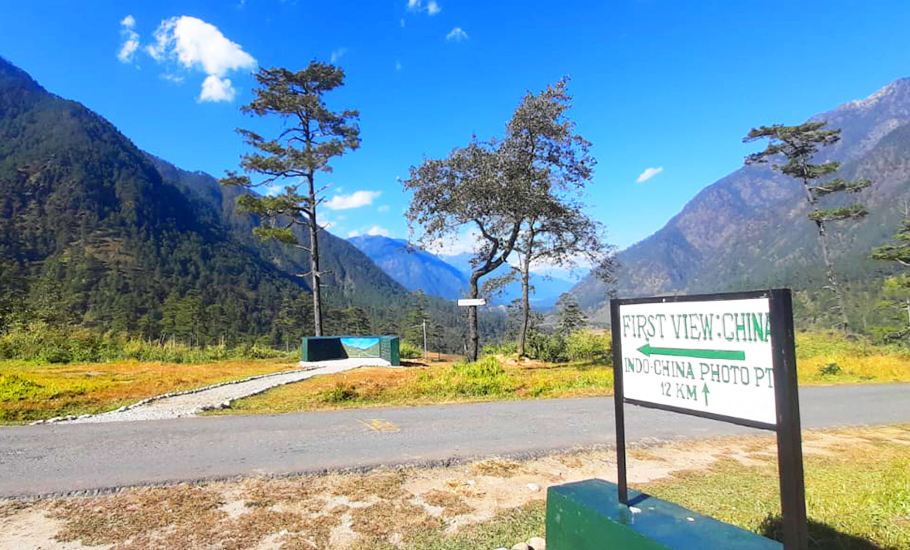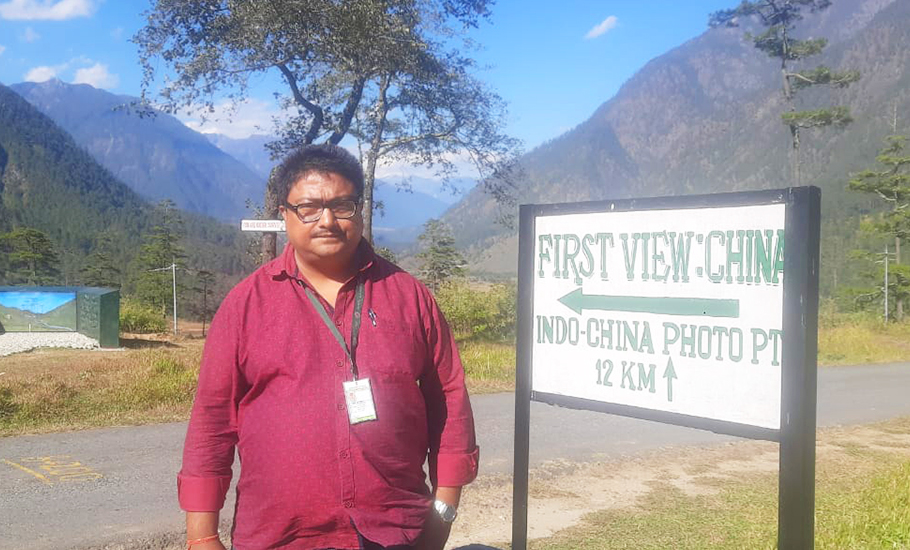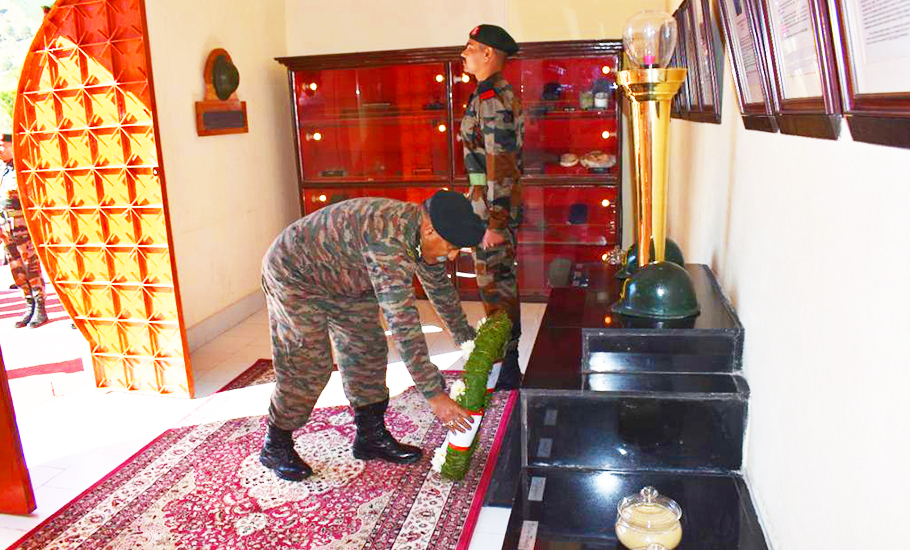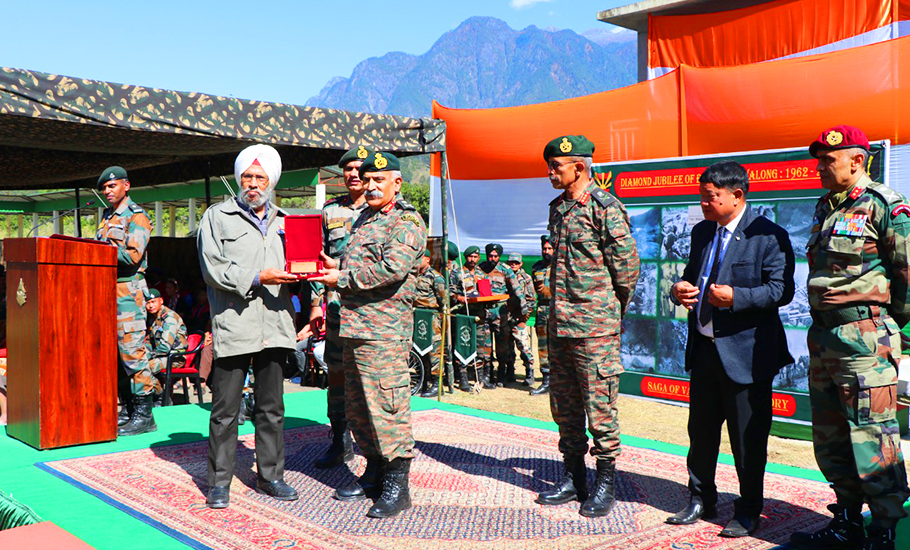
- Home
- News
- Analysis
- States
- Perspective
- Videos
- Education
- Entertainment
- Elections
- World Cup 2023
- Features
- Health
- Business
- Series
- Economy Series
- Earth Day
- Kashmir’s Frozen Turbulence
- India@75
- The legend of Ramjanmabhoomi
- Liberalisation@30
- How to tame a dragon
- Celebrating biodiversity
- Farm Matters
- 50 days of solitude
- Bringing Migrants Home
- Budget 2020
- Jharkhand Votes
- The Federal Investigates
- The Federal Impact
- Vanishing Sand
- Gandhi @ 150
- Andhra Today
- Field report
- Operation Gulmarg
- Pandemic @1 Mn in India
- The Federal Year-End
- The Zero Year
- Premium
- Science
- Brand studio
- Home
- NewsNews
- Analysis
- StatesStates
- PerspectivePerspective
- VideosVideos
- Entertainment
- ElectionsElections
- Sports
- Loading...
Sports - Features
- BusinessBusiness
- Premium
- Loading...
Premium

When ‘First View: China’ draws Indian tourists to far-flung Arunachal village

Nature, politics and social history rarely connect in a meaningful fashion, but the border villages in Arunachal Pradesh’s Anjaw district have crossed many such hurdles. For Indians living hundreds of miles away from Arunachal Pradesh and those who have never heard of these villages, China begins where Kibithu ends, if only one could point out the lines drawn by humans, making them parts...
Nature, politics and social history rarely connect in a meaningful fashion, but the border villages in Arunachal Pradesh’s Anjaw district have crossed many such hurdles.
For Indians living hundreds of miles away from Arunachal Pradesh and those who have never heard of these villages, China begins where Kibithu ends, if only one could point out the lines drawn by humans, making them parts of separate countries.
One of the seven administrative circles of Anjaw district, Kibithu has a dozen or so villages. Two of those villages – Kaho and Musai – fall within a 10 km range of the McMahon line – drawn way back in 1914 by British India’s foreign secretary Sir Henry McMahon – that separates India from China in the east.
India and China share a 3,488 km border which runs from the Karakoram Pass in Ladakh to Arunachal Pradesh’s Anjaw district, with Nepal and Bhutan in the middle breaking the contiguity.
Ironically, China now has become the main tourist attraction for domestic visitors to Kibithu, giving Indians a chance to get a glimpse of the dragon nation without crossing the border.

The magnificent blue mountains, the pine trees, and the gushing Lohit river, which originates in China and traversing through Arunachal’s Lohit valley meets the Brahmaputra in downstream Assam, make Kibithu a perfect holiday destination for visitors.
Prasanta Saha, a nature lover from Assam’s Tinsukia, makes it a point to visit the neighbouring state every two to three months, particularly during the winters. “It is tough to visit Arunachal Pradesh during the rainy season but as winter sets in, things become easier. It’s difficult to stay away from the lofty mountains and the tranquil land,” says Saha.
During his trip to Kibithu last week, Saha was thrilled to witness Chinese activities on the other side of the border with the naked eye without binoculars. On days when the sun shines bright and the sky is blue, one can see the villages built by China close to the Line of Actual Control (LAC).
But Saha is only among a handful of adventure-loving daredevils who, the local villagers feel, should come to visit more often and in bigger numbers.
Many locals claim the Chinese have been rapidly making inroads into areas opposite eastern districts of Arunachal Pradesh. There have been reports and photographic evidence circulating from time to time of the Chinese side building villages, constructing roads and other infrastructure close to the LAC.
India, too, seems to be waking up to the challenges, albeit gradually. The Indian government has been building roads and bridges at multiple points for faster mobilisation of troops and equipment to the LAC, besides deploying latest weapons systems close to the borders to keep the Chinese at bay.
However, things need to be expedited, says Dohailum Awailang, president of BJP’s Anjaw district committee.
“After Narendra Modi became the Prime Minister of India, a lot of infrastructure-related developments have taken place in Arunachal Pradesh. However, things will have to move at a faster pace,” he adds.
The far-flung Kibithu had no road connectivity until 1997 and the base was accessible only by air. There was just one foot suspension bridge linking it to the eastern bank of the Lohit river. “Even now, it takes a week or more for a long-range patrol to reach the border,” one of the officials deployed in Kibithu to patrol the LAC tells The Federal.

Even though things seem to have improved of late, villagers living in the border areas are still worried about the “not-to-be-trusted” Chinese. For, Awailang and the rest of the people in the sector haven’t forgotten the Chinese ingressions of 1962.
The Battle of Walong remains a constant reminder of the looming threat across the border. Sixty years later, the villages remember well how valiant Indians soldiers, despite shortage of ammunition, proper clothing and ration, gave the advancing Chinese a tough fight.
To mark the completion of 60 years of the historic battle, the Indian army recently celebrated the Diamond Jubilee of the Battle of Walong with a month-long programme which culminated on November 16.
The battle
During the 1962 war, Indian Army halted the advancing People’s Liberation Army (PLA) soldiers for 27 days which forced them to sidestep its reserve division from Tawang Sector to Walong, about 25 km from Kibithu. Outnumbered by the enemy, with little ammunition and no resources, the brave soldiers fought till the last round. This tale of valour and sacrifice continues to inspire the border villagers.
Walong was defended by four Infantry battalions – 4 Dogra Regiment, 4 Sikh Regiment, 6 Kumaon Regiment and 2/8 Gorkha Rifles – with soldiers of Artillery and Assam Rifles who stood firm and resisted the repeated attacks by the PLA from October 17 till November 16, 1962. The area, then, was accessed by the nearest roadhead at Tezu. Troops had built up in the previous months along a 200-km-long animal transport track to take up defences in the sector.

The advanced landing ground (ALG) at Walong was unpaved back then and only an Otter aircraft with 10 men could land. The long lines of maintenance led to paucity of critical storage, ammunition and adequate artillery support.
Despite these hardships, troops under the 11 Infantry Brigade took up defences in the then little-known hamlet of Walong, which became part of national folklore after the first successful defensive battle of the war was fought here by the Indian Army at Namti plains, 5 km north of Walong.
Walong is also remembered as the only sector where the Indian Army launched a counter-attack on the advancing PLA in the 1962 war.
The Indian Army had deployed two companies in forward locations astride Kibithu and Dichu along with two platoons of second Assam Rifles battalion. The main defences in the sector were along both banks of Lohit river astride the Namti plains, the Mithun Spur, the Maha Plateau and the Ladders Post on the west bank of Lohit river and along Ledge and Dong on the east bank.
According to the Army, a company of the sixth battalion of Kumaon Regiment deployed in the forward location of Madan Ridge, then known as the McMahon Ridge, was attacked on October 21, 1962. “The dogged battle resulted in 60 PLA casualties against a loss of only five soldiers on our side,” read an Indian Army communique.
It goes on to elaborate. “At Namti, soldiers of 6 Kumaon Regiment, 4 Sikh Regiment and second battalion of 8th Gorkha Rifles repeatedly foiled PLA attacks from October 25 till November 16, 1962.”
Soldiers of 6 Kumaon Regiment deployed to take screen position (taken to delay and mislead the enemy) at the Ashi Hill inflicted more than 200 casualties on the PLA. The area of Namti plains was christened as ‘Tiger’s Mouth’ by the Chinese as more than 600 PLA troops were trapped in this area by the 4 Sikh Regiment and nearly 200 of them perished on October 25, 1962. The area was effectively covered by fire from three directions with troops deployed at the Mithun Spur, the Maha Plateau and the Ladders Post.

Despite repeated attacks, the PLA could not breach the defences of Namti till November 16, 1962. The 6 Kumaon Regiment occupied the tri-junction on the Western heights of Walong and launched a counter-attack on PLA troops who had tried to outflank Namti from the west and had occupied the Green Pimple and the Yellow Pimple areas on November 14, 1962. Despite lack of artillery support, a daylight attack was launched at 9.30 am. The battle continued for the next two days until the soldiers of 6 Kumaon and 4 Dogra, who were inducted as reinforcements, ran out of ammunition.
The soldiers were asked to pull back after it could not sustain in the final leg of the battle.
Six decades later, the area is touted to be developed as a tourist hub, so far visited only by adventure enthusiasts like Saha.
A tourist attraction
Realising the massive tourism potential of the area, a few homestays and resorts have also come up here. However, the local villagers complained that due to bad roads and non-availability of mobile network, people who visit once do not show much interest in coming back again.
“The state government is aware of this fact and trying to address the issue in a systematic way,” says Anjaw Deputy Commissioner Talo Jerang.
In fact, in tune with the Centre’s Vibrant Villages to enhance infrastructure and livelihood opportunities in villages along India’s border, the state government too has declared Kibithu and Walong as tourist destinations.

“The state has allocated Rs 10 crore as the first instalment for development of infrastructure such as guest houses, village roads and power supply etc., in the area,” Jerang adds.
An ambitious project of developing three model villages – Kibithu, Kaho and Musai – along the LAC have been taken in response to the Chinese model villages being built across the LAC.
All these developments, Jerang and others hope, will not only help turn Kibithu as a tourist destination but also offer livelihood opportunities to the villages.
“It’s time the rest of India comes and sees how Indians on the border villages live and what we live for,” says a villager who identified himself as Joyu Megu.

